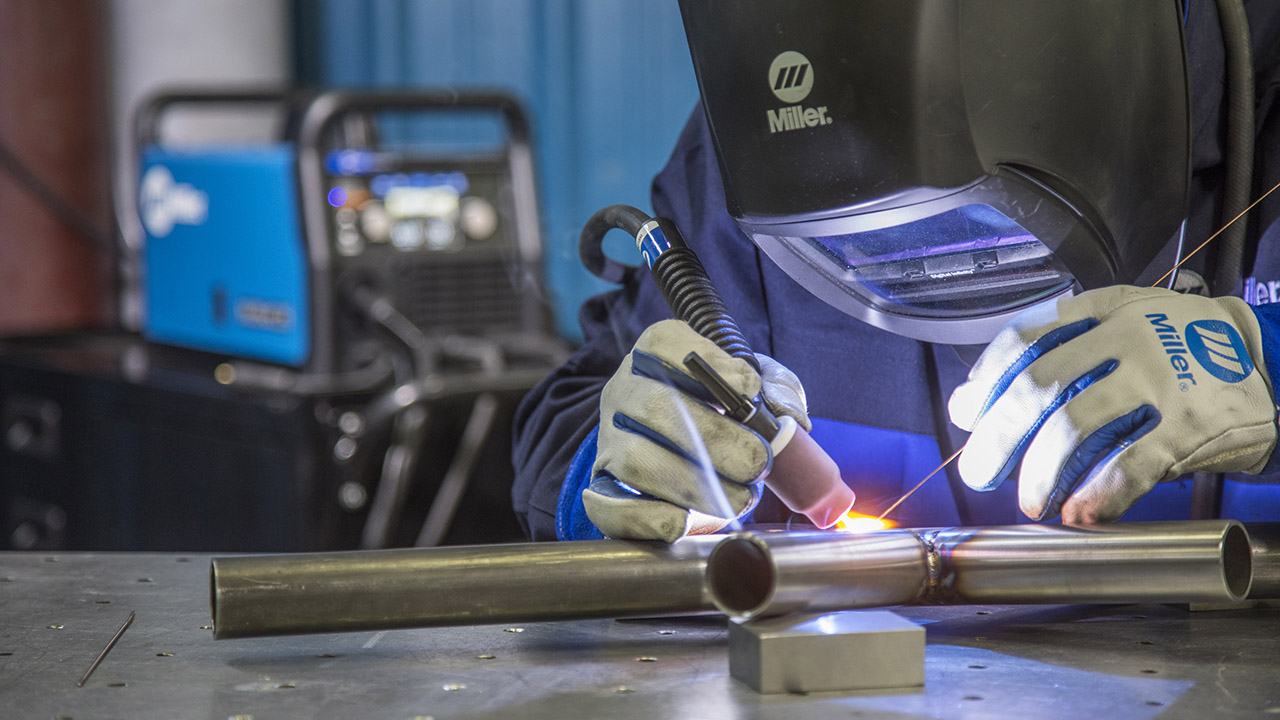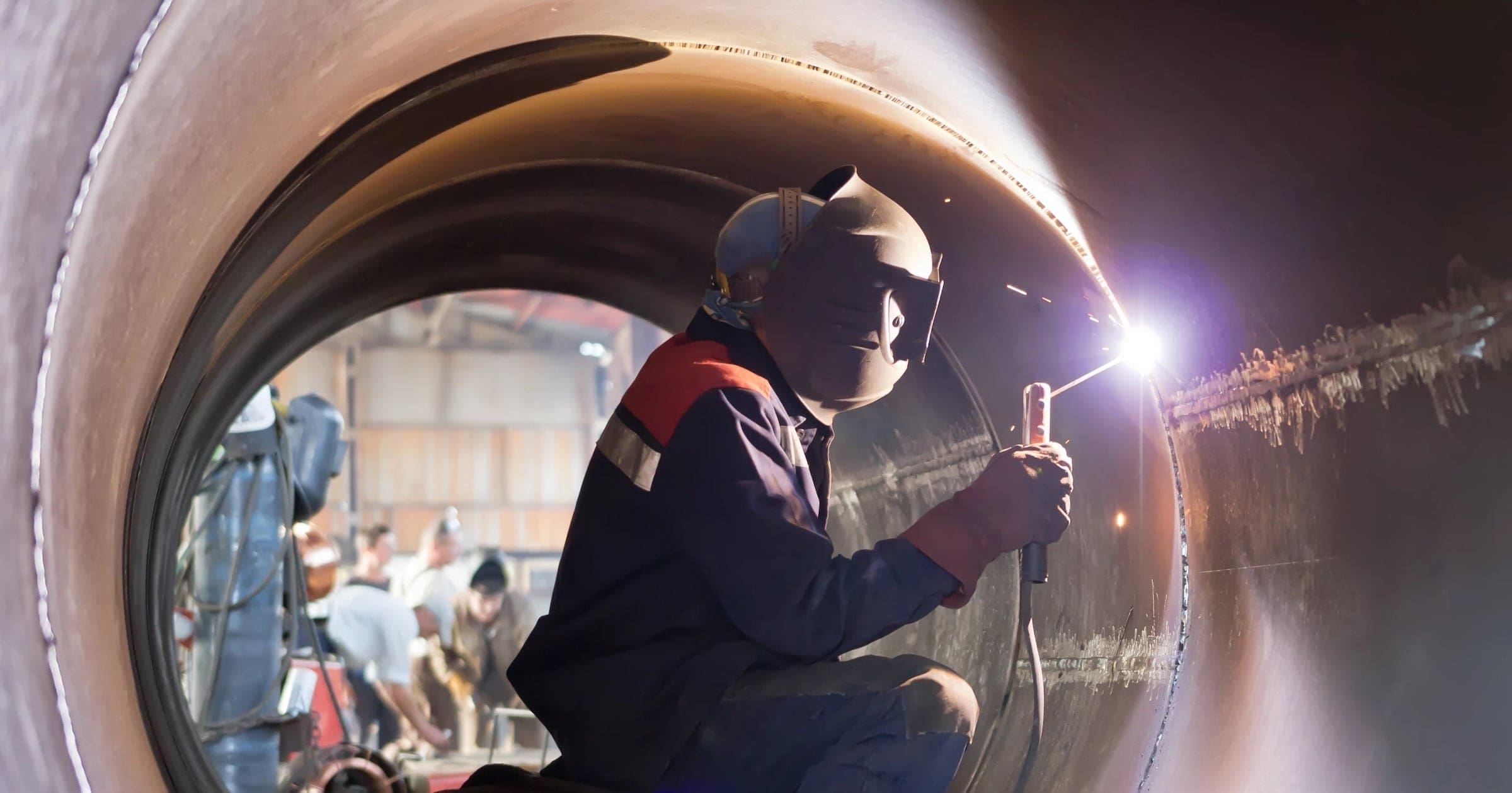Common Welding Repair Work Issues and Just How to Address Them Successfully
Welding repairs commonly encounter a variety of concerns that can threaten the honesty of the last item. Usual problems consist of poor infiltration, porosity, and misalignment, amongst others. Each issue presents special challenges that call for certain methods for resolution. Recognizing these problems is essential for welders intending to improve their skills and end results. This conversation will certainly check out these common welding repair service concerns and reliable methods to address them.
Inadequate Infiltration
Poor infiltration happens when the weld metal fails to fully fuse with the base material, leading to weak joints and prospective structural failures. This concern often comes from inadequate warm input, inaccurate electrode angle, or inappropriate welding speed. Welders may encounter insufficient penetration as a result of a mistake of the necessary parameters for a details material thickness or type. Furthermore, contamination on the base material's surface area can prevent efficient bonding, aggravating the problem. To address poor infiltration, welders need to ensure appropriate setups on their tools and preserve a tidy work surface area. Regular inspection of welds is recommended to recognize any shortages early, enabling timely modifications and the avoidance of compromised structural honesty in welded settings up.
Porosity
Porosity is an usual flaw in welded joints that shows up as small gas bubbles trapped within the weld steel. This defect can compromise the stability of the weld, leading to decreased toughness and potential failing under anxiety. Belgrade. Porosity generally emerges from contamination, moisture, or incorrect welding strategies, which permit gases to run away right into the liquified weld swimming pool. To address porosity, welders should assure appropriate surface area preparation, maintain a tidy functioning environment, and make use of appropriate welding criteria. In addition, selecting the best filler material and shielding gas can alleviate gas entrapment. Regular inspection and screening of welds can assist determine porosity early, ensuring timely restorative activities are taken, thereby maintaining the quality and integrity of the welded structure
Imbalance
Imbalance in welding can develop from numerous aspects, including inappropriate configuration and thermal growth. Recognizing the source is essential for reliable resolution. Several modification techniques are offered to realign elements and ensure structural integrity.
Root causes of Misalignment
Welding imbalance typically comes from a variety of underlying issues that can compromise structural stability. One key cause is improper fit-up of components prior to welding, which can bring about gaps and irregular surfaces. Variants in thermal expansion throughout the welding process can likewise cause distortion, specifically if the materials being signed up with have different coefficients of development. Furthermore, inadequate fixturing and securing might fall short to hold parts firmly in area, resulting in movement during welding. Badly maintained devices, including welding equipments and tools, might introduce variances in the weld bead, more contributing to misalignment. Finally, operator error, stemming from insufficient training or experience, can likewise play a substantial role in creating misaligned welds.
Adjustment Methods Available
Dealing with misalignment successfully needs a mix of restorative methods customized to the specific concerns handy. One typical technique is making use of jigs or fixtures to hold elements in the correct position during welding, making certain regular placement. Additionally, preheating the products can help in reducing distortion and improve fit-up. For substantial imbalance, mechanical realignment methods, such as making use of hydraulic jacks or clamps, can be utilized to remedy the placement prior to welding. Post-weld warm treatment may also be required to alleviate tensions triggered by misalignment. Ultimately, mindful evaluation and change throughout the setup stage can stop imbalance issues from becoming considerable issues, advertising a smoother welding procedure and enhancing general architectural stability.
Distortion
Distortion is an usual challenge in welding that can develop from numerous factors, including unequal cooling and heating. Comprehending the reasons for distortion is essential for executing reliable avoidance strategies. Resolving this problem not only improves architectural integrity yet also boosts the overall quality of the weld.
Causes of Distortion
When subjected to the intense warm of welding, materials frequently go through adjustments that can result in distortion. This phenomenon largely emerges from thermal growth and tightening during the welding procedure. As the weld location warms up, the product expands; upon air conditioning, it contracts, which can create inner anxieties. Additionally, unequal home heating throughout a workpiece can worsen these tensions, causing warping or flexing. The kind of material also plays a considerable function; metals with varying thermal conductivity and coefficients of development might react differently, resulting in unforeseeable distortions. In addition, bad joint layout and poor fixturing can add to imbalance during welding, increasing the likelihood of distortion. Comprehending these causes is essential for efficient welding repair work and prevention strategies.
Prevention Techniques
Effective prevention techniques for distortion throughout welding emphasis on managing heat input and guaranteeing correct joint design. Maintaining a consistent warmth input assists to minimize thermal development and tightening, which can result in distortion. Making use of methods such as preheating the workpiece can additionally lower the temperature gradient, promoting consistent heating. In addition, choosing appropriate joint styles, such as T-joints or lap joints, can boost stability and minimize anxiety focus. Applying correct fixturing to safeguard the workpieces in position further help in preserving positioning throughout the welding process. Ultimately, staggered welding series can disperse warmth much more uniformly, stopping local distortion. By applying these methods, welders can significantly reduce the probability of distortion and enhance the general high quality of their welds.
Fracturing
Cracking is a common problem experienced in welding fixings, typically resulting from different variables such as incorrect cooling prices, product selection, or insufficient joint prep work. The incident of cracks can greatly jeopardize the integrity of the weld, causing prospective failures during operation. To address this problem, welders have to first examine the origin causes, making sure that materials are suitable and appropriately chosen for the particular application. In addition, regulating the air conditioning rate during the welding process is essential; quick cooling can induce stress and anxiety and lead to splitting. Correct joint layout and preparation additionally add to reducing the danger. Applying these techniques can boost weld high quality and toughness, ultimately minimizing the likelihood of splitting in ended up weldments.

Insufficient Fusion
A substantial problem in welding repair work is insufficient fusion, which takes place when the weld steel does not properly bond with the base material Full Article or previous weld passes - Montana Mobile Welding and Repair. This flaw can result in weak points in the joint, potentially compromising the honesty of the welded framework. Elements adding to insufficient fusion include not enough heat input, improper welding technique, and contamination of the surfaces being signed up with. To address this concern effectively, welders need to assure correct pre-weld cleaning and surface area prep work, as well as change their welding specifications to attain adequate penetration and combination. Regular examination throughout the welding procedure can also help determine incomplete fusion early, permitting prompt corrective procedures to enhance the general quality of the weld
Overheating
While welding fixings can boost structural stability, overheating presents a substantial obstacle that can result in product degradation. Too much warm during welding can change the mechanical residential or commercial properties of steels, resulting in minimized strength, boosted brittleness, and warping. This phenomenon is especially important in high-stress applications where architectural reliability is extremely important. Identifying getting too hot can involve aesthetic examinations for staining or distortion, as well as keeping an eye on temperature level during the welding procedure. To minimize the threats associated with getting too hot, welders need to use appropriate strategies, such as regulating warmth input, readjusting traveling rate, and making use of appropriate filler products. Additionally, executing pre- and post-weld heat therapies can assist bring back material buildings and improve the total quality of the repair service, guaranteeing long-term performance and safety.
Regularly Asked Questions
What Are the Usual Indications of a Welding Issue?

Exactly How Can I Check My Welds for Top quality?
To evaluate welds for high quality, one can use visual examinations, ultrasonic testing, and radiographic techniques. Each method ensures structural honesty, identifies defects, and confirms adherence to specified criteria, eventually improving the integrity of the bonded joints.
What Safety and security Precautions Should I Take While Welding?
When welding, one must focus on safety and security by putting on suitable personal safety tools, making sure correct ventilation, securing combustible products away, maintaining a clean work space, and being mindful of environments to avoid injuries and accidents.
Can I Repair a Weld Without Renovating the Entire Joint?
Repairing a weld without renovating the entire joint is possible, depending on the damage (Montana Mobile Welding and Repair Belgrade). Methods such as grinding, including filler material, or utilizing a welding process can effectively address specific problems while protecting the surrounding framework
What Devices Are Important for Effective Welding Services?
Crucial devices for effective welding repairs consist of a welding device, cable brush, grinder, safety equipment, clamps, and filler products. Each tool plays an important duty in making sure quality and safety and security during the repair process. Porosity normally occurs from aws e6013 contamination, wetness, or improper welding methods, which allow gases to get away right into the molten weld swimming pool. Poorly conserved devices, consisting of welding equipments and tools, might present incongruities in the weld bead, additional contributing to imbalance. When subjected to the extreme warmth of welding, materials usually undergo modifications that can lead to distortion. Cracking is a common problem encountered reference in welding repair work, often resulting from different aspects such as improper cooling prices, material selection, or insufficient joint prep work. A significant issue in welding fixings is incomplete fusion, which takes place when the weld metal does not effectively bond with the base material or previous weld passes.
Comments on “Field-tested steps to prevent porosity in welds with Belgrade Welding”